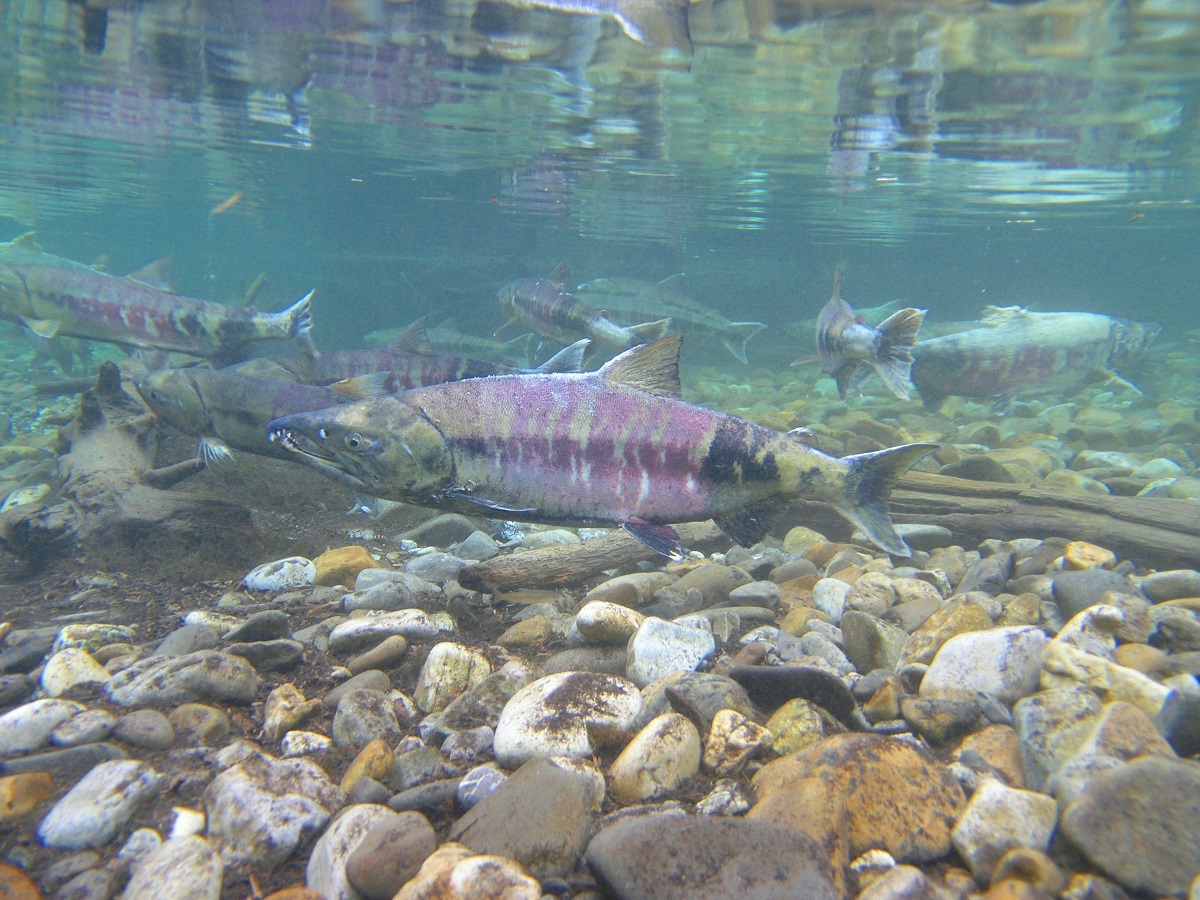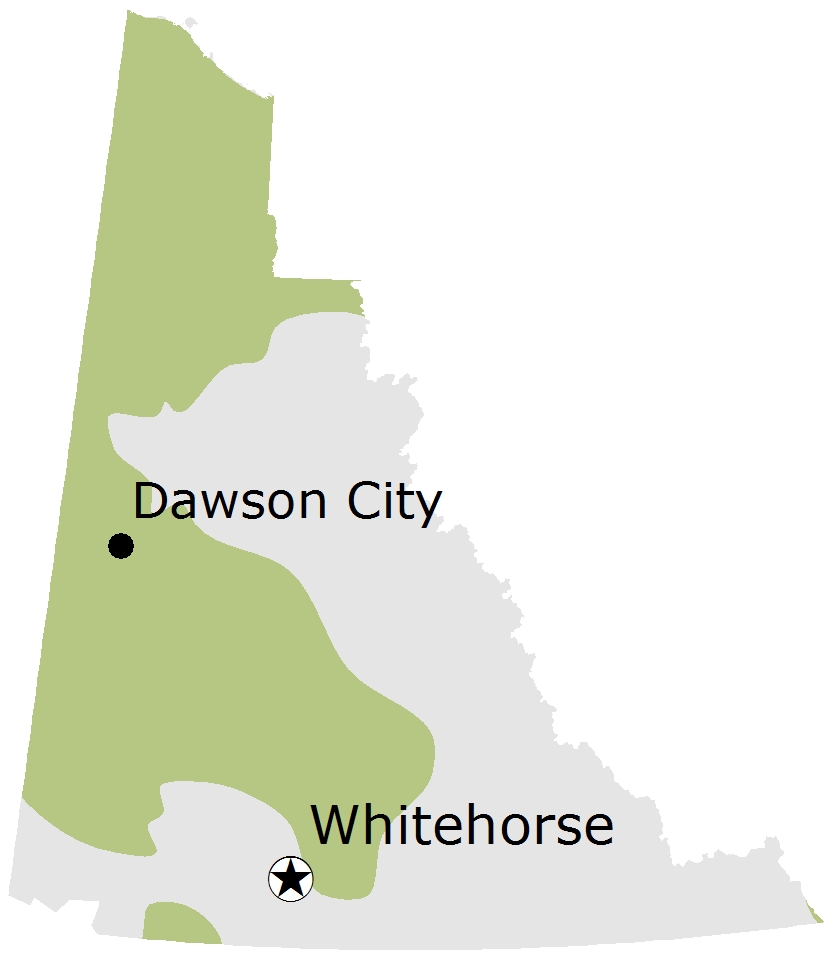
Credit: Mark Connor
Name
- Common name: Chum Salmon
- Scientific name: Oncorhynchus keta
- Order: Salmoniformes
- Subfamily: Salmoninae
Also known as
Dog Salmon
Viewing opportunities
- Chum Salmon are the most abundant salmon species in the Yukon. They spawn in the major tributaries of the Yukon River including the White, Stewart, Pelly, Porcupine and Teslin rivers from late summer to early winter.
Description
- Chum are distinguished by the lack of black spots on the back and fins, but a fine black speckling on the upper sides and back.
- Pelvic and anal fins are white tipped and the tail is shallow and forked.
- Spawning fish are greenish to black with dark red mottling and, or greenish bars on their sides; males develop a kype, or hooked jaw and large teeth.
Fast facts
- Length: 50 to 80 cm
- Weight: 3 to 7 kg
- Habitat: Anadromous
Conservation status
- Yukon: S4 (Apparently Secure)
- Global: G5 (Secure)
Yukon population estimate
Not determined.
Behaviour
The most widely distributed Pacific salmon, Chum spawn in rivers from California to Japan, north to the Arctic and east to the Mackenzie River. Young salmon spend a short time in spawning areas then move directly to the ocean for several years. From late summer to early winter, mature Chum Salmon return to spawning grounds, only in areas where ground water discharges, or “upwells” into stream and lake bottoms.
Diet
Juveniles feed on aquatic insects and crustaceans; spawning adults do not feed.
Distribution

Chum and people
- Chum Salmon are often called Dog Salmon because of the sharp dog-like teeth of spawning males and because they were often used to feed sled dogs.